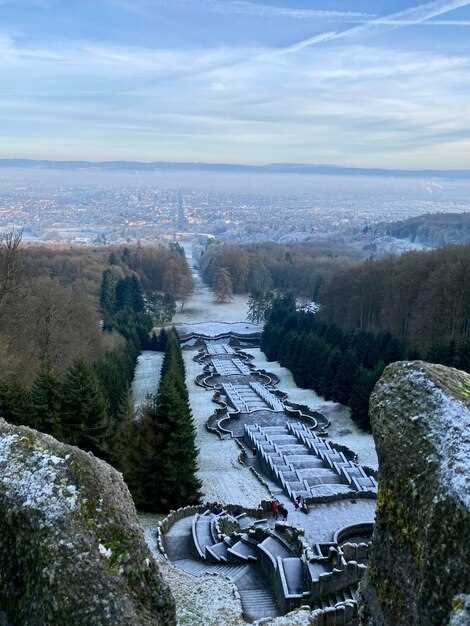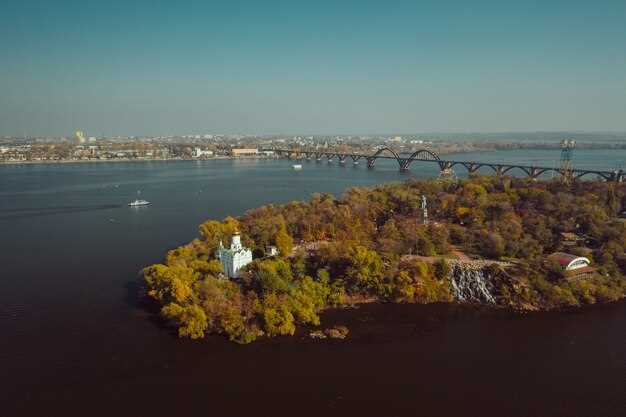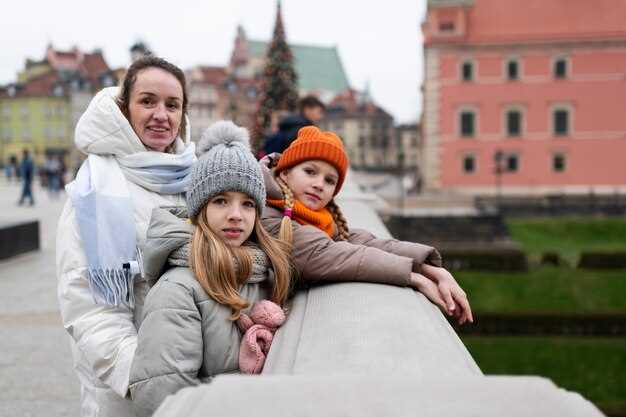Choose an unforgettable plan for visiting Lesser Poland in 2025: start in Kraków, then weave in Wieliczka Salt Mine, Bochnia, and the Tatra foothills, before savouring regional dishes at cozy inns. If you’re arriving from bydgoszcz, our routes connect quickly to the city hub and keep you moving without fuss.
Explore a flea market circuit and a handful of designs studios where polish artisans present modern pieces. Our route features exhibitions that connect traditional craft with urban style, and a standing lineup of stops that stay relevant all year.
To tailor your plan, contact our team. We offer a whole region-focused set of recommendations and let you choose what fits your pace. We pair visits with comfortable stays in a traditional house and provide hints for exhibitions worth a look.
Want a ready-made path? Our 2025 guide highlights Kraków’s Old Town, Wieliczka, Bochnia, Zakopane and the Tatra trails, with practical tips on travel times, best months, and savour experiences. Book a guided or self-guided tour and see awe-inspiring views, from hilltop vistas to river gorges, all in a compact, modern package you can book today.
Krakow Old Town Practical Guide: curated attractions, itineraries, and insider tips for 2025

Begin your kraków Old Town day with a 9:00 stroll along Planty, then enter Main Market Square and grab a quick coffee at a public cafe before queuing for St. Mary’s Church tower tickets. From convenient locations nearby, you can map a route that stays within a compact radius.
For 2025, two compact itineraries fit right into a single morning or a relaxed afternoon: Loop A, 90 minutes around the Market Square, Cloth Hall, and Town Hall Tower; Loop B, 2.5–3 hours, adds Planty paths and a quick look into the city walls at the Barbican. Whether you prefer a brisk pace or a deeper dive, these routes ensure you spend time on the must-see core and leave space for further discoveries next.
Next, optimize a half-day or full-day trip to Wieliczka Salt Mine, paired with miners’ exhibits, then return to kraków for evening vibes and a holy site stop at St. Florian’s Gate or Wawel Cathedral’s hilltop steps.
Evenings bring a friendly, public vibe around the Market Square, with free concerts on warmer nights and seasonal festivals that draw locals and visitors alike. Expect alpine vibes in certain cafés with pine aromas and mountain-style decor, and plan around the idyllic moments you’ll stumble upon in tucked courtyards. If your plan includes a Monday night, stake out a spot near the main stage for a towering sunset over the square and a sense of living history in the air.
| 地点 | Time window | Why visit | Tips |
|---|---|---|---|
| Main Market Square (Rynek Główny), Kraków | 9:00–10:00 | Central hub with Cloth Hall, St. Mary’s, and city life | Arrive early for photos; consider online tickets for St. Mary’s |
| St. Mary’s Church Tower | 10:00–10:30 | Panoramic views from the upper level; iconic horn signals | Line moves faster in morning |
| Planty Park & Barbican | 10:30–11:15 | Green ring around the square; easy, scenic walk | Wear comfy shoes |
| Wieliczka Salt Mine (optional day trip) | 2–4 hours | Underground chapels, salt-carved statues; miners’ heritage | Book early; take public transport from Kraków Główny |
Top 6 must-see landmarks in Krakow Old Town with opening hours and ticket tips
Start at St. Mary’s Basilica to catch the hejnał and set the pace for a leisurely, pictures-filled day. Then roam along quaint streets and front-facing buildings toward six reliable stops that stay within a compact loop by the Market Square and the pine-lined Planty grove. This route works in winter and August alike, with the river a short stroll away and the city’s vibes shifting with the light.
-
St. Mary’s Basilica (Kościół Mariacki) – Hours: interior 06:00–21:00; tower viewing 09:00–17:00. Tickets: church entry 15 PLN; tower 25 PLN; combo 35 PLN. Tips: buy online if possible and contact the desk for a combined ticket; St. Mary’s Basilica is known as the crown jewel of Kraków’s Market Square; catch the hejnał on the hour from the front square; arrive early or late to avoid crowds; the exterior and two towers make for striking pictures, and from the tower the city can look almost upside-down as the streets fan toward the river; after the visit roam toward the next stop along Floriańska Street for a smooth transition.
-
Sukiennice (Cloth Hall) – Hours: 10:00–18:00; Upper Gallery and exhibitions typically 11:00–17:00. Tickets: Gallery 20–25 PLN; combined with St. Mary’s 35–40 PLN. Tips: grab a photo under the arcades and sip coffee at a nearby cafe (vincis) for a quick break; buy a combined ticket for fast access; the copper-gilt altars and wooden stalls reflect Kraków’s exquisite craft and the photos you take here will look great on paper and in memory; this is a jewel in the market, a true sight of the city’s history of trade and art.
-
Florian Gate and Barbican – The southwest entrance to the Old Town; exterior views are open any time. Barbican interior shows typically 10:00–18:00 on visiting days; tickets around 8–12 PLN. Tips: take a leisurely stroll along the front of the gate and across the nearby pine grove for a calm photo session; the brick walls add a quaint, almost alpine vibe to the skyline; sunset light here is ideal for catching the vibe before you head to the next stop.
-
Collegium Maius (Jagiellonian University) – Hours: 10:00–17:00. Tickets: around 25–30 PLN for main site; 35 PLN for full access with the medieval instruments collection. Tips: book ahead online; the stone courtyards, old maps and star charts are fascinating for hands-on photos and a sense of years of learning; this stop pairs well with a quick stroll toward the river for more pictures and a lighter pace.
-
Church of St. Peter and Paul – Hours: 08:00–19:00. Tickets: 10–15 PLN. Tips: the baroque interior rewards visitors with exquisite decoration; visit early or late to beat crowds; the front façade is strong in the morning light, and the calm interior provides a nice break during a sightseeing loop by the street that leads toward the river.
-
Church of St. Anne’s (Kościół św. Anny) – Hours: 09:00–18:00. Tickets: around 7 PLN. Tips: combine with a look at nearby Collegium; the frescoes and vaulted ceiling are worth a quick look; consider a paper map to mark your route and plan a finish at a café for bigos and local food to taste Kraków’s flavor as you recap the day’s adventure, then head to the riverbank for a final view of the lights and the vibes.
Concluding note: Kraków’s Old Town offers a compact, well-lit circuit ideal for a leisurely, pictures-filled day. If you’re curious about other Polish cities, you’ll notice contrasts with gdańsk’s harbor and Kraków’s intimate streets; planning a trip with a mix of winter calm and August crowds makes the most of both atmosphere and hours. From the pine-lined Planty to the river’s edge, you’ll experience a taste of Polish history in the city’s quaint vibe and timeless buildings, a true adventure for sightseeing and food lovers who want to forget the rush and roam at a calm pace, enjoying bigos and pierogi along the way, and keeping a paper map handy for reference. For extra flavor, stop by a local bakery and try alpine-inspired pastries or a simple slice of bread and cheese; this balanced route keeps you engaged and well-fed as you explore Krakow’s southwest corner and the front of the Market Square.
One-day walking route through the Main Market Square, St. Mary’s Basilica, and Planty Park
Begin your day on the Main Market Square, where sunlit façades glow and the square buzzes with locals and visitors. Plot a 4–5 km loop that links the Cloth Hall, St. Mary’s Basilica, and Planty Park for a compact, citydaytours-friendly itinerary. youre about to experience a strong blend of history, architecture, and warm, welcoming energy.
From the square, move toward the Cloth Hall and step into the ornate limestone surroundings of St. Mary’s Basilica. The highest tower dominates the skyline, and its interior houses gorgeous altarpieces that glow in candlelight. If you time it, you can watch the hourly trumpet signal from the tower, an impressive tradition that remains a major Krakow highlight. Miners and merchants once left their mark here, a reminder of Krakow’s strong, working-class roots.
Head to Planty Park, a lush green belt that rings the Old Town. The scenery stays calm but always engaging, with friendly benches, strolling musicians, and glimpses of medieval walls. It’s the perfect part to slow your pace, breathe warm air, and plan the next leg. The loop gets you closer to Krakow’s heart.
Along the route you can visit several underrated spots: a tiny chapel, a hidden courtyard, or a mural inspired by zalipie folk art–an unexpected contrast to the stone grandeur. The park loop also connects you to restaurants and cafés where you can grab coffee, pierogi, or a light lunch.
To keep a good pace, allow about 3.5 hours for the walk with two short breaks: 15 minutes for coffee on the square, 10 minutes inside a church, and 20 minutes to soak in Planty’s edge views. Wear comfortable shoes, bring water, and keep your camera ready to capture gorgeous façades and the ornate details that Krakow preserves in limestone and stonework.
If you want a broader framework, this route serves as a solid base called a perfect kickoff for a broader Krakow day, with citydaytours that reach the Beskids, lower towns, and high limestone scenery beyond the city center. If youre traveling with friends, this loop becomes a strong starter for shared discoveries and memories. The town is friendly and welcoming, making the day easy to enjoy.
Finish back on the Market Square, where the warm glow of dusk makes the ornate façades seem freshly painted. This route remains friendly for first-timers and offers a memorable window into Lesser Poland’s culture, history, and gastronomy. Afterward, plan a second day to visit other neighborhoods and savor the city’s vibe–lush parks, impressive views, and a magical sense that stays with you.
With gentle pacing, you finish perfectly satisfied, ready to plan your next citydaytours adventure.
Hidden gems and alternative viewpoints near Krakow Old Town for quieter experiences
Begin with a dawn stroll across Kładka Bernatka for calm river views and an honest sense of Kraków’s daily rhythm.
From there, drift along the shaded back lanes of Kanonicza and Józefa to discover intimate courtyards, tiny galleries, and low-key cafes.
For a natural respite, head to Zakrzówek; the lake and cliff paths offer quiet spots for a moment of reflection and a light picnic.
Circle Planty Park around the Old Town, then descend toward the Vistula bank for tranquil views and gentle waterside strolls.
Even closer, Kopiec Kościuszki provides skyline views without crowds; go early and you will catch birds, a gentle breeze, and a sense of space.
If you crave a local flavor, visit Stary Kleparz Market on a weekday morning to watch vendors set up and sample fresh produce.
These pockets of quiet complement the well-trodden routes, offering space to breathe between visits.
Food and drink hotspots: where to taste regional Polish fare within the Old Town
Start at Wierzynek on Rynek Główny for a masterclass in regional Polish fare–pierogi ruskie, żurek, and venison–presented with modern flair, a moving blend of history and modernity. You’ll move through gothic arches, and you can expect a smoothly paced sequence of small plates that keep the focus on the flavor of each region. The service remains attentive, with the customer at the center of every table.
Then slip into Pod Aniołami for classic dishes in a vaulted setting that blends well-known tradition with a cozy, cellar-like ambiance. The menu includes pierogi with mushrooms, żurek in a rye bowl, and slow-braised beef; the space sits in a former factory-turned venue that adds an industrial-chic edge to the dining experience. The wines pair well with the robust flavors and the standard hospitality you expect.
For a broader taste, combine a long, leisurely stroll with guided walks through the Old Town, stopping at small rooms where chefs explain the craft. The route can include a flea market vibe, where vendors offer herbs and regional snacks; you might find kudowa-inspired herbs and honey on sample boards between stalls. These pauses add to the interest for every customer and to the sense of place.
Guided tastings based in the Old Town connect a curated set of restaurants with local producers, and the host explains origin stories and chef techniques. The route includes a pastry stop and a coffee break, with each stop including a tasting plate and a paired beverage. On monday, several venues host themed menus that highlight seasonal produce and regional cheeses.
With major sights nearby, the Old Town area feels welcoming to visitors who base their stay on a compact, walkable circuit. Accommodation within easy reach lets you linger over every plate, and you’ll see lives of local producers who bring lush herbs, dairy, and meats to the table. A small plaque recalls the hitlers era, reminding visitors that history shaped the streets and flavors just as much as the recipes do. The route evolves with the season, and the town’s layout overlooks Planty park and the Gothic skyline, offering a timeless backdrop for both casual dining and more ambitious tasting menus. The mining heritage of Wieliczka hints at regional connections that flavor spice blends and salt finishes, reaching a peak when shared with neighbors and guests. The statement is simple: taste, learn, and explore them together.
Guided tours and experiences: how to choose, price ranges, and what to expect

Choose a small-group, locally licensed guide for guided tours in Lesser Poland; this keeps things affordable, stands above mass-market options, and lets you watch quiet streets come alive as you explore historic districts located along the Vistula river.
Always check public reviews on travelfish and national tourism boards; while booking, carry a copy of your ID and your reservation details to avoid delays at the meeting point.
Price ranges reflect the level of service: lower-cost group tours are 25-40 EUR per person for 2-3 hours, a full-day adventure is typically 180-350 EUR per group, and half-day private tours run 120-180 EUR. For venues located near cities and towns, these values can vary slightly; always confirm what is included–entrance fees, meals, and transportation–before you book.
What to expect: itineraries focus on Krakow’s Old Town and surrounding districts, with stops at markets, churches, and the Wieliczka salt mine when included. Guides usually share engaging stories, offer tips for photos, and tailor the thingstodo and things to your interests. Bring a camera for photos, especially during golden hour, and consider a starry-night option to capture the city lights from a vantage point. Pierogi tastings often appear as optional add-ons for a deeper taste of local culture.
To stand out, pick guides who are located in town with strong knowledge of countrys and national parks; ask about the plan for public transport, what to watch for, and whether the route includes quiet moments to avoid crowds, being flexible helps you fit more thingstodo into a day and make the experience worth your time.
Practical tips: pack light, carry water, and bring a power socket adaptor for venues with older outlets. If a guide offers a transport option, check the route and pickup points; ask whether gear can be stored safely during site visits and whether photos are allowed inside venues.
When planning a broader trip that includes thousand-year-old sites, consider combining Krakow with nearby cities and countryside; a good guided experience helps you discover quiet corners and starry skies, whether you’re traveling from albania or another country. Guides can provide maps and tips directly from local districts and national archives, balancing adventure with relaxed moments that fit your pace.

 2025 Recommended Attractions in Lesser Poland (Updated Sep)">
2025 Recommended Attractions in Lesser Poland (Updated Sep)">
